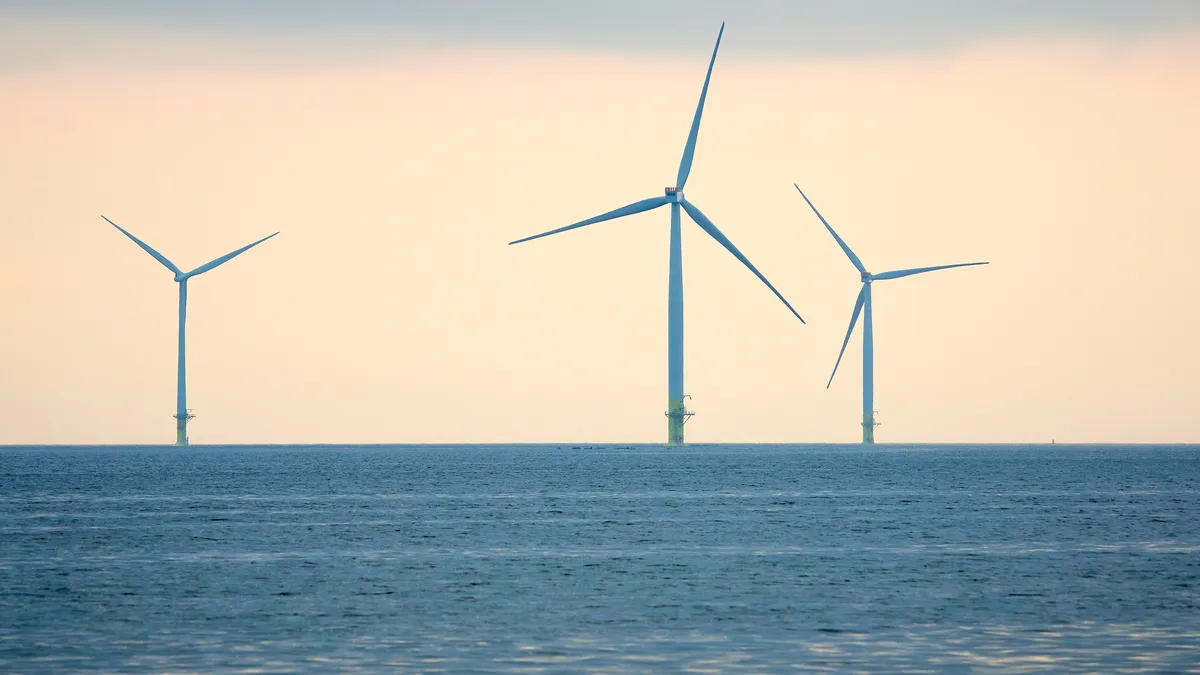U.S. offshore wind is at an “inflection point” and poised for “liftoff” but has not yet achieved it, the Department of Energy said Wednesday in a report on the industry’s progress toward full-scale commercialization.
“U.S. offshore wind will achieve ‘liftoff’ when the sector is actively contributing to decarbonization targets, with a sustained project pipeline and regular deployment,” DOE said in its one-page summary of the report. “There is a clear path to scale, with [around] 50 GW-worth of U.S. seabed already leased to developers (more planned), and early project deployment advancing rapidly.”
Full-scale commercialization by DOE’s standards involves three overlapping phases: a committed demand pipeline for long-term offshore wind offtake agreements, followed by the deployment of the first 10 to 15 GW of U.S. projects, then steady deployment and continued supply chain expansion.
“In the fixed-bottom wind market, phase 1 is on track for liftoff, phase 2 is underway, and phase 3 will follow soon,” DOE said.
The report adds that the market for floating offshore wind — a technology that will be required in the deep waters off the West Coast — is at an “earlier stage,” as the path to deploying it still requires more infrastructure planning.
“Enabling infrastructure will be key to liftoff, across both fixed-bottom and floating wind markets,” DOE said. “This includes critical supply chain links: the availability of ports and vessels will set the annual deployment potential of the U.S. market, and widespread expansion across component supply chains will be required to support growing demand both in the U.S. and abroad.”
The report addresses recent market turbulence in the sector, which resulted in the cancellation and delay of several projects in 2023. Last week, New York cancelled provisional awards for three offshore wind projects, citing GE Vernova’s decision to pivot away from a planned 18-MW turbine model as a contributing factor.
“Early mover projects faced a “perfect storm” of challenges and have provided valuable lessons on how to sequence and structure investments for a sustainable offshore wind industry,” DOE said.
Projects that aimed to reach final investment decision from 2023 through 2026 “have seen the greatest risk exposure, while the longer-term pipeline has less risk of cancellation due to (1) 2020s project and infrastructure buildout (2) stabilizing macroeconomic headwinds, and (3) risk mitigations by states and developers,” the report said.
“Lessons learned from the challenges of the past few years will shape the market moving forward,” DOE said. “These include ongoing efforts by states and industry to refine project and supplier procurement, fostering regional collaboration for supply chain and transmission planning, and government investments to support necessary enabling infrastructure.”
The report is the ninth in a series of ‘liftoff’ reports from DOE that are examining “how and when various technologies could reach full-scale commercial adoption.” DOE has also released reports on advanced nuclear, clean hydrogen, long-duration energy storage and virtual power plants, among other topics.
Along with the liftoff report, DOE’s Wind Energy Technologies Office announced plans to spend $48 million to fund projects that “address several major areas of need” for offshore wind.
These areas include “advancing U.S. academic leadership in floating offshore wind”; research and development into offshore wind platforms; expanding the reach of the domestic supply chain; and new monitoring technologies for the protection of offshore wildlife.















